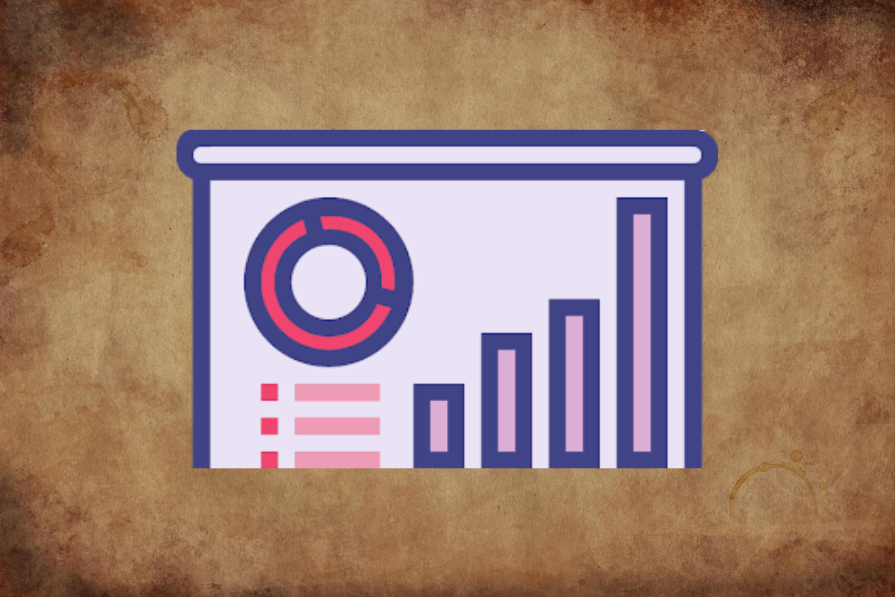Before Carl Benz invented the first practical modern automobile in 1886, the world was still running around on horses. Even after Benz, the process of manufacturing cars was laborious for workers, making it difficult for the world to embrace cars. It wasn’t until Henry Ford revolutionized the automobile manufacturing industry by introducing the moving assembly line that widespread adoption was possible.

Ford identified a better way of doing things and as a result, it led to a more efficient process which allowed the Ford Motor Company to build the famous Model T much quicker and at a lower cost. Ford’s advancement is an example of how society spreads and adopts innovations over time, which is the basis of the diffusion of innovations theory.
In this article, you’ll learn more about this theory, which outlines how to identify a potential successful innovation, how innovation diffuses, the categories of adopters, and the stages of decisions that adopters go through when considering an innovation.
The diffusion of innovations theory was made popular in 1962 by Everett Rogers, a communication theorist and professor. He wrote about the theory in his book “Diffusion of Innovations,” which describes the rate at which new ideas, products, and technologies are adopted by members of a society over time, and the factors involved in spreading it. The term “early adopter” originates from Rogers’ theory.
This theory aims to understand what causes innovations to be adopted and how that adoption spreads. In the theory, Rogers outlines the characteristics of an innovation, the stages of decision-making in the adoption process, the categories of adopters, and the main elements of the diffusion of innovation.
Understanding how innovation diffuses and is adopted can help innovators predict market behavior and prepare for realistic outcomes when looking to introduce a new product or technology. Studying adoption patterns can also help companies identify and mitigate potential risks or barriers to entry, which increases the chances of successful adoption.
Now let’s first understand what makes an innovation and how these traits affect the potential adoption and diffusion of the innovation. Based on Rogers’ initial insights as well as other studies, these five characteristics are most common across innovations. When creating a truly innovative product, service, or technology, consider if it has each of these traits to maximize its chances of successful adoption.
For two things to be compatible, they need to have the ability to work well with one another, without problems or conflict. A successful innovation considers society’s existing values, patterns of behavior, or tools, as it has to fit in with what is currently acceptable.
For example, electric vehicles are compatible with society’s need to lower carbon emissions, which has helped with early adoption. However, charging an electric vehicle isn’t quite as convenient as filling up a gas tank, which could be preventing many people from adopting it:
This trait not only applies to innovations, but to any goods or services. The ability to try something before you buy it can increase the chances of converting someone to a paid customer. Think about a mattress company that offers a three-month trial period with a full money-back guarantee, or a streaming service that offers 30 days before you have to sign up for a subscription:
Providing the ability for consumers to try a new product or service risk-free takes some friction out of the buying process. It gets the product or service into the hands of the consumer quicker and helps sell itself if their experience is positive. The same logic applies to innovations, especially because there can be many questions and uncertainties around adopting innovative products or technologies.
At its core, innovation is the implementation of a new or improved good or service that has some sort of relative advantage to what’s currently offered on the market. For an innovation to be widely adopted, its value should be evident to consumers.
There was a time when people didn’t have the choice of sending emails or text messages. The Internet and the smartphone provided people with alternative ways to communicate with others, saving them significant time. The relative advantage of these technologies was efficiency and it was clear to consumers, which led to their mass adoption:
The easier it is for people to see an innovation used, the more likely they are to adopt it themselves. Just like how companies employ influencer marketing strategies to generate interest in their product, when consumers see others, especially celebrities or people of status, using something new, their interest is piqued. Not to mention, observing others use a product increases the perception of its trustworthiness and reliability, as other people seem to trust and enjoy it.
An innovative social media platform, like Lapse, is easily observed by others using it, as it gets promoted by sponsors and people are invited to use it by their friends:
The fifth trait of innovation is around its learning curve, or how long it takes for people to become proficient using an innovative product. The easier it is for someone to learn how to use something new or understand how it works, the quicker it diffuses into a population. In other words, a lower barrier to entry for consumers increases the chances of adoption due to ease of use and the limited ramp-up time required:
By definition, diffusion is the movement of anything from a region of high concentration to one of low concentration. In terms of the diffusion of innovation, this can be thought of as a new product being adopted by a small group of people in one location to a large group of people in many locations. The factors involved in this diffusion as described by Rogers include innovation, adopters, communication channels, time, and social system.
The first element is the innovation itself, or otherwise, any idea, method, or device that is considered new or an improvement on an existing one. Some examples of innovations include electric vehicles, smartphones, or the metaverse.
The people who decide to start using an innovation are known as adopters. Often, these are individuals, who adopt new innovative consumer products, such as Facebook or the iPhone. Adopters can also be organizations, governments, businesses, or countries, which focus on innovations that have an impact at scale.
For innovations to diffuse, there must be a method to transfer information from one person or organization to another. Communication channels are vital to spread awareness of an innovation and encourage adoption. Some typical communication channels used are word-of-mouth, social media, and news outlets. Opinion leaders who influence communities of people can also have a strong impact on adoption.
A significant factor in the diffusion of innovation is time. It takes time for innovations to be adopted, especially by a large population. Some innovations may take years to be widely adopted, with a slow ramp up in the beginning. Others may see rapid adoption based on momentum in the market. OpenAI’s ChatGPT only took five days to reach a million users, while Netflix took around three and a half years to reach the same number of users:
A social system is a network of individuals, groups, or organizations that are connected by relationships and have influences on potential adopters of an innovation. They’re characterized by social norms, values, mandates, and behaviors that influence the actions of its members, including adopting innovation. Some examples of social systems include educational institutions, religious communities, and corporate organizations.
When it comes to adopting innovative products and services, there are five different categories of adopters based on the time of adoption. The result of the diffusion of an innovation is represented by a normal distribution curve:
On the far left side, the innovators are the first group of individuals to adopt an innovation. They’re typically well-connected with other innovators and tend to have a high risk tolerance, as they use their financial means, social status, and connections to explore, build, and release new innovative products. The innovators make up only 2.5 percent of all adopters.
Early adopters are often opinion leaders with high social standing and have influence over large groups of people. They’re strongly connected with innovators and can see the potential benefits of investing in a new innovation. These early adopters play an important role in the diffusion of an innovation over time, as they make up 13.5 percent of all adopters and have significant influence over the early majority.
The early majority makes up a third of all adopters and are easily influenced by early adopters to adopt an innovation. This group of people are keen on using new technologies, but are less willing to take risks, which is why they wait for early adopters to give their sign of approval. After an innovation has been adopted by the early majority, its market share reaches around 50 percent.
Next, the late majority will adopt an innovation after the majority of society has already adopted it. They are skeptical and hesitant to adopt new technologies, especially due to concerns around reliability and affordability.
Lastly, the laggards are the last group of people to adopt an innovation. They’re typically reluctant to take risks and have a difficult time adjusting to change. The laggards are usually less connected with communication channels that promote innovation, which explains them being out of touch with ongoing progress of innovations in general.
For innovators looking to understand how adopters make the decision to adopt an innovation in the first place, these are the five stages of decision-making outlined by Rogers in the adoption process:
First, adopters are made aware of the innovation’s existence. They probably gain high-level knowledge about the innovation through communication channels, like the news or social media, but they’re not intrigued enough to adopt it yet. As time goes on and they continue to hear about the innovation, adopters may be persuaded to actively seek out more information to learn about the innovation on a deeper level.
Then, they typically enter the stage where they weigh the pros and cons of adopting the innovation. This includes having a clear understanding of its advantages and disadvantages, how steep its learning curve is, and whether it seems to be worth its cost, among many other factors. At the decision stage, an individual may choose to accept or reject the innovation.
If they choose to adopt it, they’ll implement the innovation and begin to use it. At this stage, they’ll be judging its usefulness to decide whether or not it’s still worth adopting. The more time they spend using it, the more they’ll understand the innovation and its use cases.
In the end, they’ll confirm their decision to continue using the innovation, or ultimately reject it. But usually, when an innovation is in the implementation phase, the innovators receive feedback from adopters that allow them to iterate and improve the innovation, thus leading to an increased chance of successful adoption and widespread diffusion.
Without innovation, the world would be stagnant. But it’s not just up to the innovators to change the world. Adopters play a big role in deciding which innovations are adopted and diffused by society. If you’re looking to create an innovative product and want the best chances at succeeding, consider the five traits of an innovation: compatibility, trialability, relative advantage, observability, and complexity.
Also, understand that diffusion of innovation requires effective communication channels and a supportive social system to spread the word to adopters. Adoption doesn’t happen overnight. It can take months or years for the early adopters to laggards to adopt your innovation.
Even knowing the diffusion of innovations theory doesn’t guarantee that your innovation is bound to catch on. More often than not, innovations fail to gain traction due to timing or luck. But that shouldn’t stop you from continuing to pursue innovation and advance society with new technologies. There are so many problems and opportunities that could use an innovative new idea, but it’s up to the innovator to come up with a solution effective enough for adoption.
LogRocket's Galileo AI watches sessions and understands user feedback for you, automating the most time-intensive parts of your job and giving you more time to focus on great design.
See how design choices, interactions, and issues affect your users — get a demo of LogRocket today.

I’ve spent enough time designing with WCAG 2.2 to know it’s not enough. Here’s why I’m skeptical and cautiously hopeful about WCAG 3.0.

I learned this lesson the hard way. Good UX doesn’t survive endless approval loops. Here’s what went wrong — and how to protect your vision.

I’ve reviewed “final” designs more times than I can count — and the copy almost always gives users a reason to hesitate.

The checkbox is one of the most common elements in UX design. Learn all about the feature, its states, and the types of selection.